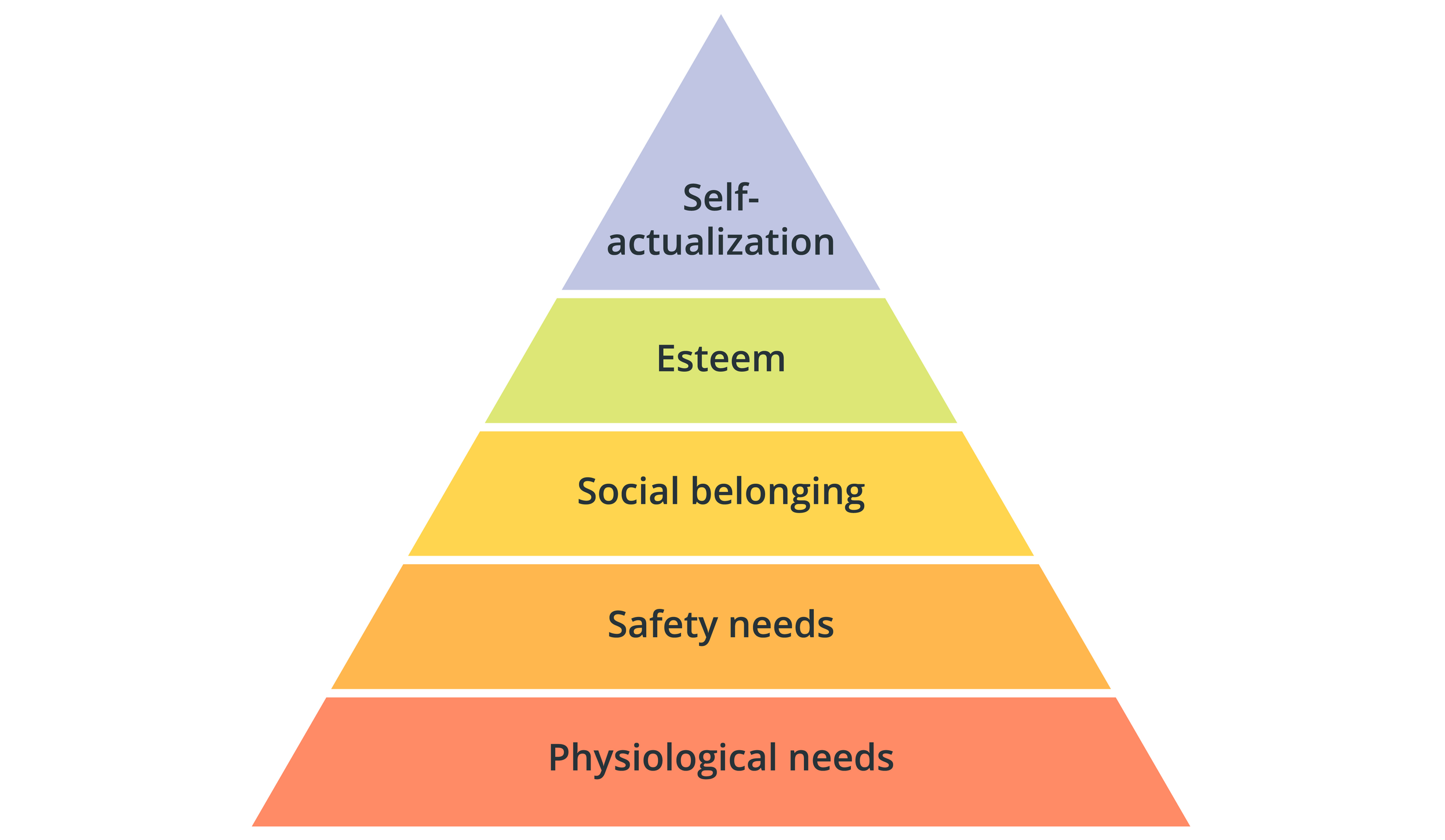From Survive to Thrive: Taking Psychological Safety Up a Notch
Psychological safety is one of those buzz terms that has become so synonymous with employee sentiment during the pandemic, that there is a danger it may lose its significance. However, ...

Psychological safety is one of those buzz terms that has become so synonymous with employee sentiment during the pandemic, that there is a danger it may lose its significance.
However, as employees plough through the early months of 2022 – when, after almost two years, the virus still very much a threat to people’s health and livelihoods – it’s crucial that employers don’t rest on their laurels and assume that just because they have catered to their employees’ baseline wellbeing needs, they are doing enough. When it comes to building psychological safety in the workplace, employers must consider the nuances of today’s context and kick their efforts up a notch.
This blog will explore how to build a psychological safe workplace that is primed for success in 2022.
What is psychological safety?
Psychological safety is, in short, when people can be themselves and voice their opinions without fearing judgement or backlash.
Amy Edmondson, Novartis Professor of Leadership at Harvard Business School, and leading researcher on the topic of psychological safety, defines it below:[1]
“Psychological safety describes an environment where you believe you can offer ideas, ask for help or report a mistake without negative repercussions.”
Why is psychological safety at work important?
The importance of psychological safety at work cannot be overstated; a psychologically unsafe working environment can devastate employees’ self-esteem, mental health, and overall morale. But it’s not only employee wellbeing that workplace psychological safety holds at stake; a psychologically safe environment is also undeniably linked to a business’s bottom line.
Psychological safety can often feel like an abstract concept that is difficult to achieve in a measurable way. For one thing, it can mean different things to different people, and there is no silver bullet for achieving any companywide wellbeing initiative.
A good place to start is to consider Maslow’s Hierarchy of Needs (pictured below). Employees have several expectations from their employer if they are to be productive, engaged, and healthy.
The pyramid has five levels of needs: physiological, safety, love/belonging, self-esteem, and self-actualisation, with the bottom two being basic needs, which must be fulfilled before moving on to their higher, more advanced needs (self-actualisation).
The pyramid can also illustrate the difference between surviving (i.e., when ‘physiological needs’ and ‘safety’ are met) and thriving (i.e., when someone achieves ‘love & belonging’, ‘self-esteem’ and ‘self-actualisation’). At the beginning of the pandemic, employers were rightly focused on ensuring employees had their baseline wellbeing needs met. But now, after two years of living in a pandemic world, that isn’t good enough. Employers must strive for the top-tier of wellbeing. Forget ‘psychological safety’, the goal should be ‘psychological enrichment’.
It goes without saying that when employees are psychologically enriched, they are more engaged, motivated, innovative, loyal, and productive – and an organisation’s bottom line will feel the benefit.
Read about the four pillars of wellbeing, and how employers can enhance employee wellness programs, in ELMO’s blog here.
Creating psychological safety in the workplace
Below, we identify five people-centric practices that can take psychological safety from survive to thrive.
1. Build a culture of trust
Trust is a fickle thing. It can take years to build and seconds to break.
Lack of trust within an organisation is pervasive, seeping through every level while affecting productivity and engagement. From an employee perspective, a workplace with a strong trust culture is likely to improve feelings of safety and psychological wellbeing. According to a study[2] published in the Harvard Business Review, people working in high-trust companies, compared to those with low-trust, reported:
- 74% less stress
- 13% fewer sick days
- 76% more engagement
- 29% more satisfaction with their lives
- 40% less burnout
A high-trust culture will also improve retention levels, with research confirming that companies with higher levels of trust enjoy turnover rates approximately 50% lower than industry competitors. At the companies with the highest levels of trust, an average of 87% say they “want to work there for a long time.”[3]
An important component of a high-trust culture is measuring output, rather than input (what’s achieved rather than time spent achieving it); transparency at all levels of the business; and frequent, open communication.
2. Empower employees through autonomy and ownership
When crisis hits, or during times of uncertainty, it makes sense that leaders play it safe and focus what’s most important – everything else is ‘nice-to-have’. This was certainly the approach of most organisations back in early 2020 but should not be the case now. The effect can make employees feel as if their wings have been clipped: with routine tasks and no variety, there is no room for experimentation and exploration. The result is that ambitious people feel stifled – and organisations should be lucky if they have ambitious people in their ranks – and the lack of growth will cause irritation, frustration, and stunted performance.
Dignifying employees with the autonomy to forge their own paths is like giving them wings. Leaders should ask employees what projects they want to work on, how they want their career to advance, and how their life outside of work can be improved to therefore boost their professional performance.
This approach towards job enrichment is a major retention driver as it builds on trust and shows employees that their individuality, ideas, and creativity are valued. Thinking back to Maslow’s Hierarchy of Needs, this helps employees reach ‘self-actualisation’.
Managers should have important conversations about self and professional fulfilment with their team members during one-to-one meetings. Additionally, employers should conduct regular pulse surveys to gauge employee sentiment and satisfaction and receive to feedback. Explore how ELMO’s Engage Suite can help to boost employee engagement.
3. Create an environment where people can speak up
An environment that allows employees to speak up without fear of judgement or harsh criticism is not only positive for employee wellbeing: it’s an essential driver of innovation. But it’s important to remember that a company culture that does not tolerate toxic behaviours like bullying or harassment is not automatically empowering or cultivate confidence among workers – it is just the first step of the journey, an expectation.
Read: Is Your Workplace Culture Positive, or Does it Breed Toxicity?
Creating an open culture means encouraging conversation and creating channels for feedback, as well as allowing for a degree of ‘upward communication’, where employees can have constructive dialogue with decision makers. This helps with challenging the status quo and identifying both issues and opportunities.
There are some tangible steps HR can take in giving employees a voice. These include implementing technology channels that enable conversation, such as Slack and Zoom, as well as more traditional methods like suggestion boxes.
That said, part of building an environment in which employees speak up is encouraging positive and constructive dialogue, while unconstructive negativity should be nipped in the bud.
4. Encourage innovation
Innovation is in many ways a by-product of all the factors that help to create a psychologically safe environment. Studies show that psychological safety allows for moderate risk-taking, speaking one’s mind, and creativity. Nonetheless, having values and processes in place that make it permissible to fail and to be vulnerable are essential ingredients for driving a culture in which employees will feel safe enough to experiment, take risks and learn from one another in the process. An example of this could be having a forum – whether in the form of a Slack channel or a working document – where learnings are recorded and used to inform a future project. Read our blog on the attributes that set HR innovators apart.
5. Lead by example and champion transparency
Leading by example helps to build a trusting and psychologically safe culture where employees have strong role models and behaviour frameworks. Leading by example means owning up to mistakes, ensuring a culture of transparency, and practising self-awareness.
For example, if a project doesn’t go to plan, don’t abandon ship without giving the ‘why’. It’ll just cause disengagement among the workers who were likely asked urgently to drop everything to be involved. It may mean that the next time orders come from above, people won’t be so willing to give their time to the cause. Lack of communication around the failures also curtails growth, trust, and belonging.
From an employee perspective, transparency – like innovation – is enabled by a psychologically safe working environment. In such an environment, employees will feel comfortable to discuss any challenges they are facing, without fear this will compromise impressions of their competence. Leaders should therefore set this tone by admitting to mistakes and ingraining a “fail-fast” approach into company culture.
In 2022, organisations must take a people-centric approach to psychological safety – rather than a ‘tick-and-flick’ approach – if they are to hold onto top performers.
ELMO Software is a cloud-based solution that helps thousands of organisations across Australia, New Zealand and the United Kingdom to effectively manage their people, process and pay. ELMO solutions span the entire employee lifecycle from ‘hire to retire’. They can be used together or stand-alone, and are configurable according to an organisation’s unique processes and workflows. Automate and streamline your operations to reduce costs, increase efficiency and bolster productivity. For further information, contact us.
[1] “3 steps to foster psychological safety, according to the leading researcher on the topic”, HRM, 2021
[2] “The Neuroscience of Trust”, Harvard Business Review, 2017
[3] “The Business Returns on High-Trust Work Culture”, Great Place to Work, 2019
 HR Core
HR Core 










